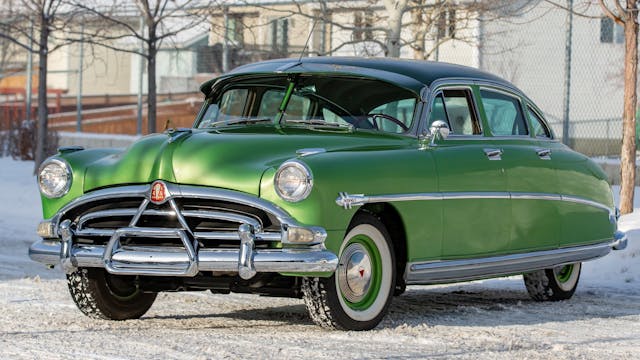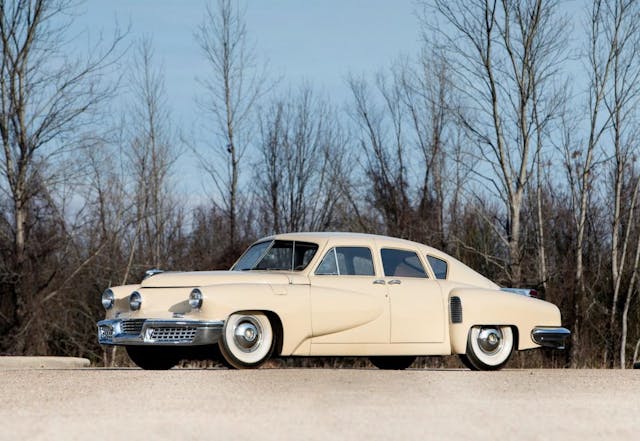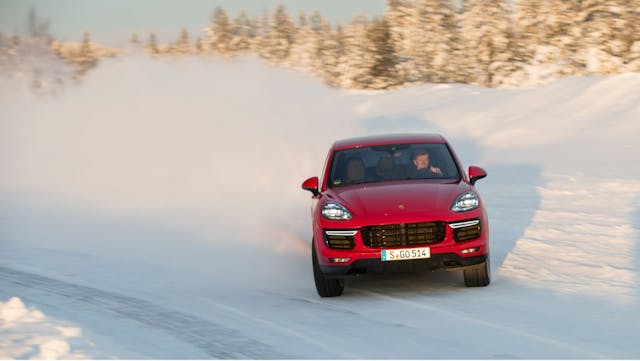5 answers to “What if Rudolph was a car?”
As one of Hagerty’s resident orphan car lovers, I naturally found myself thinking a lot about unloved cars the other day and the thought crossed my mind as to how the story of Rudolph the Red-Nosed Reindeer has some odd parallels in the car world. Seriously, these are the things that keep me up at night.
Rather than let that thought wander off and never tell anyone about it, I have decided instead to share it with all of you and prove that this insane thought actually has some merit. A few of the other Hagerty writers chipped in to indulge my crazy thought, so have a look at five cars that share at least one characteristic with a fictional reindeer.
Brandan Gillogly: 1949 Willys Wagon

Rudolph owes his roots to the Robert L. May children’s book from 1939, but I’m going back to 1949, when Gene Autry sang the original “Rudolph the Red-Nosed Reindeer” song. If the Singing Cowboy had to pick something surefooted to deliver presents, I’m betting he’d go with a Jeep, and the closest thing to a sleigh in the Jeep lineup in 1949 was a Willys Wagon. The grandfather of the SUV was even available with wood paneling.
Bryan Gerould: 1936–50 Tatra T87
The T87 led the charge in automakers’ emphasis on aerodynamic design, inspired from the aeronautics of German Zeppelin airships. Its teardrop shape was revolutionary and impressive, such that it left an imprint on other creations to follow, much like how modern children’s stories have in wake of Robert L. May’s original Rudolph tale. Both were late-1930s creations, unique underdogs, and overall brilliant concepts that went down in history. The T87’s front bay-window gives a panorama view of the way forward while a window in the rear is more irrelevant; in a group of pre-war peers, the gang’s all behind it kicking like mad to keep up.
Eric Weiner: 1951–54 Hudson Hornet

When people think of classic American sedans, the Hudson Hornet is often overlooked. It was also, like Rudolph, rather unique at the time of its 1951 debut in that its “step-down” chassis was neither truly unibody nor body-on-frame. The Hornet’s recessed floor plans gave it a low-slung look and racer-friendly low center of gravity. Unfortunately, it was a bit of a flash in the pan, and sales plummeted by the final 1954 model year.
Jeff Peek: 1948 Tucker 48

The Tucker was a misfit, just like Rudolph, way ahead of its time when it came to options and safety. And it was equally disliked and mistreated by the “old guard,” which clearly felt threatened by its innovation and potential. And oh, that center headlight. It’s iconic, like Rudolph’s red beak, and it moved in the direction the car was turning … perfect for lighting the way.
Kyle Smith: 2003–current Porsche Cayenne

If there was ever a car unnecessarily mocked and picked on by its peers, it is the Porsche Cayenne. The decision by Porsche to build an SUV was met with collective gasp from enthusiasts the world round, but Porsche isn’t one to shy away from a calculated risk and this one paid off. The Cayenne is not only sold, it began to sell in numbers that allowed the German automaker to continue building the low-volume sports cars that defined its brand—and left it strapped for cash. Rudolph saved the day and won fans; the Cayenne has done the same.
Is there a car you think parallels the Rudolph story? Tell us about it in the Hagerty Community below.

